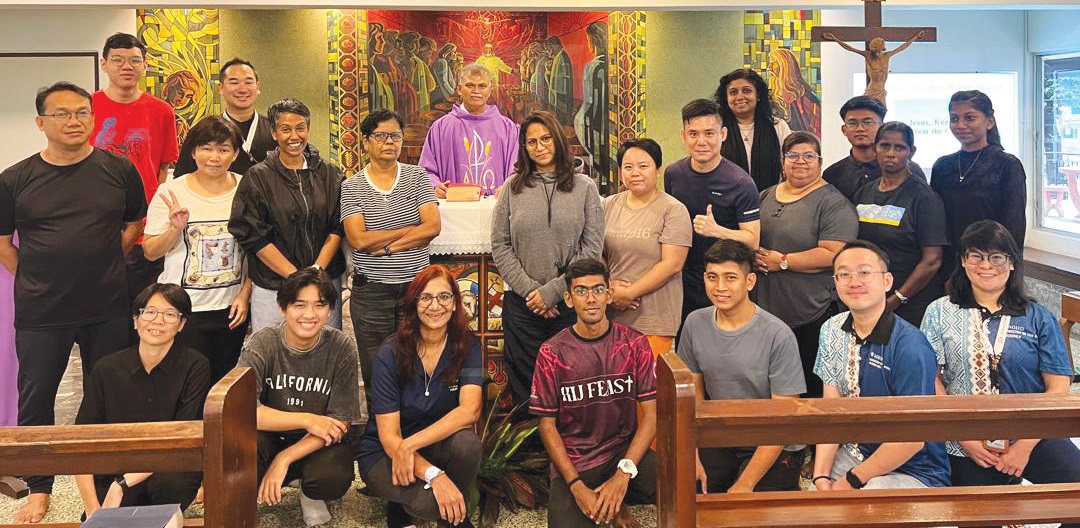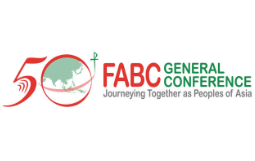Walk a mile in my shoes
Would you spend 24 hours homeless? From March 10 to 12, ten individuals from various backgrounds took part in the ‘Homeless for 24 Hours’ event, organised by the Ministry of the Poor (MOP) under AOHD, as part of the 2025 Lenten Campaign.
Apr 18, 2025

Would you spend 24 hours homeless? From March 10 to 12, ten individuals from various backgrounds took part in the ‘Homeless for 24 Hours’ event, organised by the Ministry of the Poor (MOP) under AOHD, as part of the 2025 Lenten Campaign. As 2025 marks the Jubilee Year with the theme ‘Pilgrims of Hope,’ this initiative aimed to bring hope to those experiencing homelessness. Participants embarked on a journey of solidarity to understand the daily struggles of street friends — exploring their challenges in finding shelter, food, income, and hygiene facilities. By walking a mile in their shoes, participants gained a deeper understanding of the realities faced by those living on the streets.
We kicked off the ‘Homeless for 24 Hours’ activity with an opening Mass at Cardijn House, celebrated by Fr Albet Arockiasamy, the ecclesiastical assistant to the Ministry of the Poor (MOP). The reading from the Gospel of Matthew was particularly fitting: ‘Truly I tell you, whatever you did for one of the least of these brothers of Mine, you did for Me.’ (Matt. 25:40). One of the participants, Nicholas Jeremiah, shared how deeply moved and inspired he was by Fr Albet’s homily, especially when he said, ‘Little acts of kindness will reward us in heaven.’
After the Mass, participants were briefed on the 24-hour challenge, which encouraged them to journey alongside the homeless and experience their daily struggles. Safety procedures were also outlined for the activity. The participants were then paired into teams of two and sent out onto the streets with no money, no phones—only their IDs, a cardboard, and a smart GPS tracker for safety.
Lucy Jacinta, one of the participants, expressed her initial scepticism: “I wasn’t sure we could complete this mission without cash or phones, relying only on the tracking device provided by AOHD.” However, she was glad to have survived the 24 hours without any of those comforts.
According to Nicholas, he formed friendships with several homeless individuals and learned about their life experiences. The program taught him to live like they do, and he viewed it as part of his penance for the year — experiencing homelessness and walking the streets all night without sleep. One of the most significant encounters Nicholas shared was with a Chinese uncle near a set of shop lots, a spot the uncle frequents to stay overnight. Although the uncle has a home, he chose to stay on the streets due to family issues and arguments, refusing to return. Nicholas expressed his hope and prayers that the uncle would eventually reconcile and return home, noting that family conflicts and imperfections are a normal part of life.
For Lucy and Patrick Moya, their evening began with the search for dinner. They decided to walk to Chow Kit to find food, where they met some of their homeless brothers and sisters, who kindly shared tips on where to get a meal. Lucy was deeply moved by the friendliness and caring nature of the homeless individuals. Afterward, she and her partner chose to walk back to a safer area in Kota Raya to spend the night on the streets with their homeless friends. They exchanged stories with the people they met, hearing accounts of lives lived on the streets —some had chosen homelessness, while others had been forced from their homes.
As the streets quieted down on a cool Monday night, the participants began to find different corners of the city to call 'home' for the night. Before midnight, the AOHD team made their rounds to check on the participants and were joined by a few shepherds, led by Fr Albet. To the surprise and delight of the participants and their street friends, the priests took the time to ‘turun padang’ and check in on how everyone was coping during the first few hours on the streets.
For Patrick, after walking around the city for about three hours, he discovered a place where some of the homeless had settled for the night. One of the most significant realisations Patrick had was how the number of homeless people seemed to be much lower than before. He wondered whether this was because many had found proper homes, had been moved along by building owners who splashed water on the five-foot way to deter them from sleeping there, or if it was due to the fasting month or action taken by authorities.
The next day, Patrick walked to the bridge on Jalan Sultan Sulaiman, where he found about 30-40 homeless individuals, mostly locals from out of town, particularly from Sabah. While some were resting and doing laundry, others were out searching for sources of income, selling anything they could — like aluminium cans — or doing odd jobs, such as moving. The homeless friends shared that they had often been harassed by DBKL, immigration officers, and the welfare department (JKM). A major concern for those living under the bridge was the rising water levels during heavy rain, forcing them to move to higher ground until the waters subsided. Patrick mentioned that he was grateful the ‘Homeless for 24 Hours’ experience ended with Holy Hour, providing a much-needed time for reflection and gratitude.
Another participant, Maliana, observed that the homeless community consists of people of various ages and backgrounds, including young children, married couples, and the elderly. She came to realise the importance of understanding the daily struggles — both mental and physical—that homeless individuals face, and how we can help them. After spending 24 hours on the streets, Maliana gained a deeper understanding of the challenges faced by the homeless and expressed a wish for more people to reach out, offer support, and simply be there to talk and listen. She also discovered that some homeless individuals are remarkably caring, often sharing their food and resting places with others.
After 24 hours on the streets, the participants returned to Cardijn House to conclude the activity with Holy Hour, led by Fr Andrew Manickam, OFM, Cap. The session ended with personal reflections and sharing from all the participants.
For Nicholas, one of the most significant lessons from the ‘Homeless for 24 Hours' experience was the importance of gratitude. He hopes that everyone becomes more thankful for what we have — our jobs, homes, and everything else — and remembers to thank God every day for the gift of waking up each morning. Nicholas was inspired to encourage others to support the homeless in any way they can to help ease their burdens. Lucy’s biggest takeaway was learning not to take anything for granted and to be grateful to the Lord for the roof over our heads.
For Maliana, the most profound lesson and realization was the importance of compassion, especially towards the least, the lost, the poor, and the abandoned. She reflected that we can never truly understand the struggles of others until we’ve walked a mile in their shoes, experiencing their loneliness, frustration, despair, hunger, and daily challenges. Maliana encouraged more people to participate in this activity in the future, as raising awareness is crucial. This experience has also shifted her perception of the homeless — she now sees them as ordinary human beings, deserving of love, opportunities, and care, just like anyone else. --AOHD







Total Comments:0